Where did spanish come from: The History of the Spanish Language
The History of the Spanish Language
As anything that’s been around for 1,500+ years does, the Spanish language has a rich and complicated history. It has navigated the rise and fall of great empires, has been a symbol of cultural identity, and has both been used as a tool of unity and caused considerable divisiveness. Today, it is the world’s second-most spoken native language and is used by people in all corners of the globe to express themselves. This fact makes Spanish a popular choice to learn, as native speakers are never too far away!
Origins in Latin
Spanish originated in the Iberian Peninsula as a dialect of spoken Latin, which is today called “Vulgar Latin,” as opposed to the Classical Latin used in literature. The dialect of Spanish that we consider dominant in Europe is called Castellano or Castilian Spanish.
During the Roman Empire, the Latin language was the official language on the peninsula (called “Hispania”), but it mixed with the local languages of the inhabitants, including Celts and Iberians, and began to take on its own unique flavor.
The germination of this uniqueness was accelerated by the Visigoths, a Germanic group that conquered areas of the peninsula in the 4th century during the demise of the Roman Empire. The Visigoths spoke Latin at this time, and rather than a Germanic influence on the language, their main influence was of cultural depression on the peninsula, causing the form of Vulgar Latin spoken to develop in isolation in the 5th century. This is where historians and linguists pinpoint the beginnings of the Spanish language as we know it today.
Following the Visigoths, Muslim Moorish conquerors arrived and contributed more than 4,000 Spanish words from Arabic, along with cultural influences still evident in the design, art, and architecture of Spain.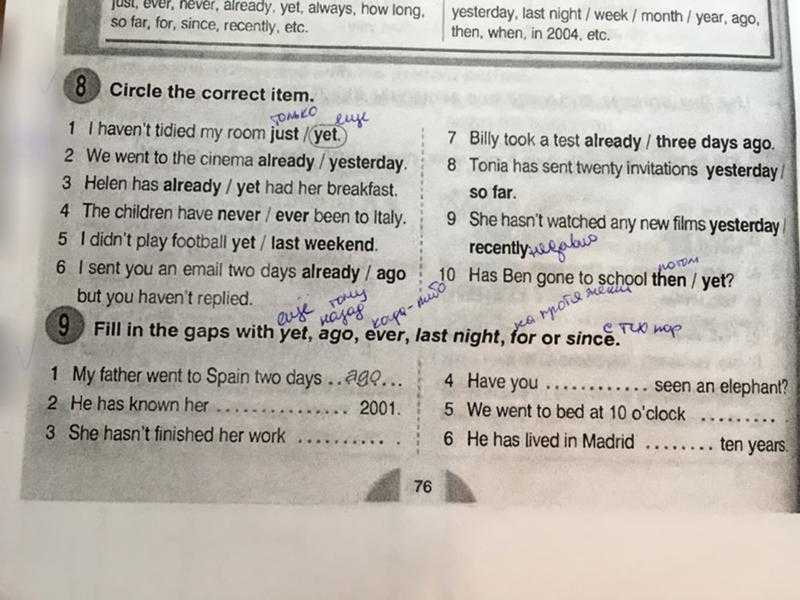 Adopted words from Arabic lost their original pronunciation, however, so the overall sounds or phonology of Spanish was surprisingly not heavily influenced by Arabic.
Adopted words from Arabic lost their original pronunciation, however, so the overall sounds or phonology of Spanish was surprisingly not heavily influenced by Arabic.
Castellano
The Reconquista period (between 711 and 1492) refers to the slow reconquering of present-day Spain from the Moors by the Kingdom of Castile (with the help of other allied kingdoms). Castilian Spanish was further popularized by the narrative poems spread orally about Castilian heroes in battle. These were recited even in areas that did not speak this dialect (people were short on entertainment back then).
In the 13th century, King Alfonso X of Castile, known as Alfonso el Sabio (Alfonso the Wise), assembled scribes in his courts of Toledo to document various subjects such as astronomy, law, and history, including translation of classical literature into Spanish. You could say that King Alfonso X was wise to the fact that written language was all the rage, and that commissioning works to be written in his native Castilian before a similar effort was undertaken somewhere else would ensure his language (and therefore influence… and therefore power) would remain prominent.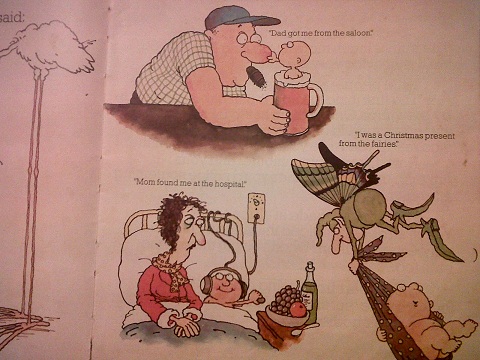 This was a genius marketing move for Castilian Spanish. This solid basis of written Castilian Spanish facilitated the spread of the language during the Reconquista.
This was a genius marketing move for Castilian Spanish. This solid basis of written Castilian Spanish facilitated the spread of the language during the Reconquista.
The next monarchs of the Kingdom of Castile, Isabella and Ferdinand, were extremely influential in the course of the history of Spanish. Isabella was the queen of Castile and Ferdinand was the King of Aragon. Both kingdoms didn’t become one right away, but “it is generally accepted by most scholars that the unification of Spain can essentially be traced back to the marriage of Ferdinand and Isabella.” Under their rule, the Castilian variety of Spanish was made the official language of all the “re-conquered” territories. They supported Antonio de Nebrija’s publication of Arte de la Lengua Castellana (The Art of the Castilian Language), the first attempt to define the grammar of a European language. Their imperial efforts also imposed Spanish on the natives of their American colonies.
Royal Spanish Academy
The Royal Spanish Academy, or Real Academia Española, was founded in 1713, mainly with the purpose of standardizing the language. For example, it did future Spanish learners a big favor by standardizing the use of accents to denote syllabic stress that does not follow the pronunciation rules (see Spanish pronunciation).
For example, it did future Spanish learners a big favor by standardizing the use of accents to denote syllabic stress that does not follow the pronunciation rules (see Spanish pronunciation).
Between 1726–1739 it produced its first dictionary (in six volumes). It’s still the authoritative source on Castilian Spanish today, reporting an estimated 93,000 words in its latest edition (2014). Because the language differs so much internationally, other Spanish-speaking countries have their own academies to keep tabs on their regional features.
Regional Languages of Spain
The original uploader was Alexandre Vigo at Galician Wikipedia.
Present-day Spain is home to several regional languages: Castilian (spoken by 99% of the population), Catalan (spoken by 19% of the population), Galician (spoken by 5% of the population), and Basque (spoken by 2% of the population). In some cases, these languages are not mutually intelligible for speakers, meaning that they can’t understand each other without some difficulty.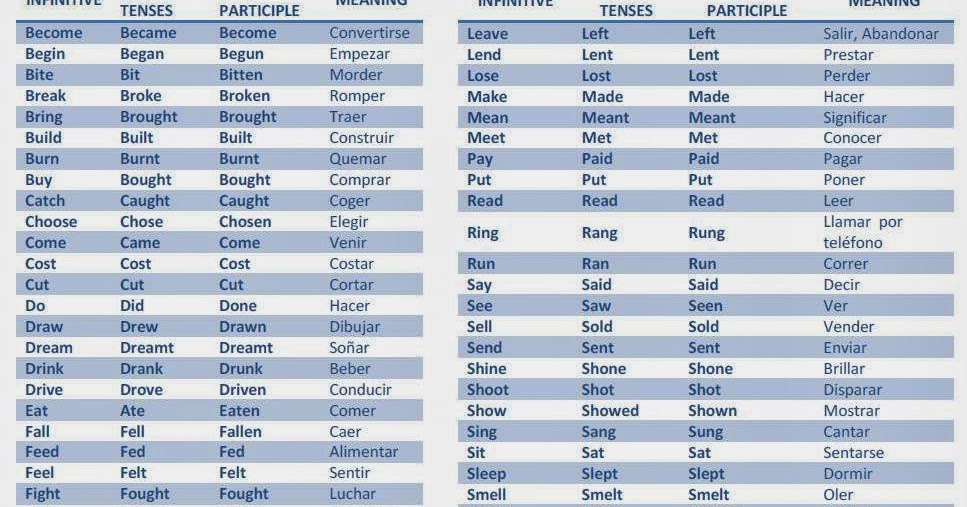 For example, the Basque language did not originate from the same language family as Spanish, and so it cannot be considered a dialect of Spanish. Today, Spaniards use Castilian Spanish as their lingua franca, but they use their regional language in their everyday lives and, in some cases, in schools and business.
For example, the Basque language did not originate from the same language family as Spanish, and so it cannot be considered a dialect of Spanish. Today, Spaniards use Castilian Spanish as their lingua franca, but they use their regional language in their everyday lives and, in some cases, in schools and business.
During the Second World War, the dictator Francisco Franco declared Castilian Spanish Spain’s only official language, prohibiting the use of other regional languages in many areas. As you might imagine, this caused turmoil in regions which identified more strongly with their regional heritage and local language than with the growing Spanish nationalistic fervor. The regime referred to these other languages as “dialects” of Spanish in a derogatory way – claiming that they were inferior and lacking, and therefore unfit for official use. The concept of “dialect” itself is very controversial and often has as much to do with historical and political implications as it does with linguistic tenets. As the old adage states: “A language is a dialect with an army and a navy.” In this case, the reference to the regional languages of Spain as “dialects” had a strong nationalistic (unifying) motivation. Foreign films were dubbed into Castilian or forced to be reissued in Castilian if originally filmed in a regional language. Non-Castilian names were even banned for newborns in 1938.
As the old adage states: “A language is a dialect with an army and a navy.” In this case, the reference to the regional languages of Spain as “dialects” had a strong nationalistic (unifying) motivation. Foreign films were dubbed into Castilian or forced to be reissued in Castilian if originally filmed in a regional language. Non-Castilian names were even banned for newborns in 1938.
In the 1960s and 1970s, the Spanish parliament agreed to allow regions to print official documents in their regional languages, and today the use of local languages is no longer illegal. There is no doubt, though, that this historical period influenced the spread and status of Castilian Spanish. This recent cultural stifling still informs the identities of many people living in these regions in Spain. Visitors to Spain may notice a strong allegiance to regional identity and pride in local heritage as a consequence of this historical tension.
Spanish in the Americas
Latin America
Spanish colonization brought the language to the Americas beginning in 1492. Today, “Latin America” refers to countries that were subject to Spanish, French, and Portuguese imperialism and therefore still speak a Latin-based language. As a result of Spanish colonialism in Latin America and a few other areas of the globe, Spanish is the official language of 20 countries today (plus one territory: Puerto Rico) and is spoken by 400 million native speakers worldwide. Spanish colonies fought for their independence from Spain throughout the 18th century but maintained Spanish as their official language. Many of these new Latin American governments encouraged use of Spanish by the Amerindian majority to promote national unity following independence.
Today, “Latin America” refers to countries that were subject to Spanish, French, and Portuguese imperialism and therefore still speak a Latin-based language. As a result of Spanish colonialism in Latin America and a few other areas of the globe, Spanish is the official language of 20 countries today (plus one territory: Puerto Rico) and is spoken by 400 million native speakers worldwide. Spanish colonies fought for their independence from Spain throughout the 18th century but maintained Spanish as their official language. Many of these new Latin American governments encouraged use of Spanish by the Amerindian majority to promote national unity following independence.
United States
The first European settlement in the present-day United States was actually established by Spain in what is now Florida. Spanish was the historical language of many current US states while controlled by the Spanish or Mexican governments. The gradual annexation of southwestern states changed the official language to English, but Spanish is still spoken by large portions of the populations in these areas today.
Researcher Rosino Lozano, author of An American Language: The History of Spanish in the United States, discusses how the transition from Spanish as an official language of territories in the American southwest stirred political tumult with the insinuation by many in power that these new territories couldn’t be both Spanish-speaking and American. Language rights are still a complicated issue in the United States and continue to be a subject of debate. Although English is the only official language of the United States, government documents are still provided in Spanish in several states, such as in New Mexico and California. Spanish is also the most widely taught second language in the United States. In the Commonwealth of Puerto Rico, Spanish retains its status as the official language.
Old Spanish versus Modern Spanish
It may surprise you to know that Shakespeare’s English was considered Modern English – that’s how much a language can change over the years! Unlike Old English or Middle English, Old Spanish is relatively easy for a Modern Spanish (from the 16th century on) speaker to interpret. The possibility to read original medieval artifacts and ancient texts is a rare opportunity for language learners, which is usually complex even for native speakers.
The possibility to read original medieval artifacts and ancient texts is a rare opportunity for language learners, which is usually complex even for native speakers.
Looking to improve your Spanish? Lingvist is the fastest way to learn Spanish vocabulary and Lingvist’s Spanish course has more than 5,000 words!
A Brief History of the Spanish Language
The evolution of the Spanish language is closely linked to the history of the world, Europe, and of course especially the Iberian Peninsula. While it is easy to take modern languages as immutable features of countries and regions, they keep evolving and are shaped by their history in fascinating ways.
The history of the Spanish language spans at least 22 centuries, from the Roman conquest of Hispania (modern day Spain and Portugal) to the use of modern Spanish around the world.
Where Did Spanish Originate
Spanish originated in the Iberian Peninsula and developed out of spoken Latin, also known as Vulgar Latin. Castilian Spanish was established as the dominant Spanish dialect at the height of the Reconquista, the reconquest of Spain from Muslim rule, and spread around the world thereafter.
Castilian Spanish was established as the dominant Spanish dialect at the height of the Reconquista, the reconquest of Spain from Muslim rule, and spread around the world thereafter.
The Origin of the Spanish Language
Beginning in 218 BC with the second Punic War against Carthage, Rome’s Mediterranean rival, the Roman Republic conquered the Iberian Peninsula and brought with them the Latin language.
The Romans built roads and settlement, cultivated olive oil and wine, and, in a foreshadowing of Spain’s later actions in Latin America, exploited minerals including large quantities of silver.
Spain After the Roman Empire
With the decline of the Roman Empire in the first half of the first millennium AD, Roman control of Hispania weakened, and invading Germanic tribes filled the vacuum of power. This ultimately resulted in the establishment of the Visigothic Kingdom in the 5th Century. The Visigoths continued Christian traditions which had been established during the later part of the Roman Empire but left only small marks on Spain’s culture and language.
In 711 AD, coming from northern Africa, the Umayyad Caliphate started the conquest of the Iberian Peninsula. Within a few years, Muslims controlled almost the entirety of Portugal and Spain. However, the length of Muslim control differed greatly across Spain and ranged from less than 30 years in Galicia in the north to almost 781 years around Granada in the South.
During this time, the Arabic language mixed with the vernacular Latin spoken in Spain especially in the south.
The Reconquista
The almost 800-year-long effort to reconquer Spain from Muslim rule is known as the Reconquista. Varying Christian Kingdoms expanded their territories from the north of Spain southwards.
Finally, in 1491, Granada, the last holdout of Muslim rule in Spain, surrendered to the Castilian-Aragonese forces, concluding the Reconquista.
Who Invented the Spanish Language?
Evolving from spoken Latin, the Spanish language was invented by Christian Kingdoms as they reconquered the Iberian Peninsula. The Kingdom of Castile emerged as the dominant force and Old Castilian Spanish emerged as the official language of the united Spain.
The Kingdom of Castile emerged as the dominant force and Old Castilian Spanish emerged as the official language of the united Spain.
Languages in the Iberian Peninsula
Each of the kingdoms participating in the Reconquista spoke various dialects of spoken Latin, a descendent of the formal Latin of the Roman Empire. The various languages and dialects in the Iberian Peninsula today, such as Castilian (Spanish), Catalan, Portuguese, and Galician, can be traced back to these competing kingdoms.
Over time, these kingdoms reconquered the Iberian Peninsula parallel to each other from the north into the south. Consequently, the languages in the Iberian Peninsula show a striking east-west patterns, like a layered cake.
Portuguese is spoken in a strip of land in the west of the Iberian Peninsula from Galicia southwards. It is not surprising that Old Portuguese is also known as Galician-Portuguese or Medieval Galician, as these languages are closely related.
Similarly, Catalan is primarily spoken on a thin strip on the east coast of Spain while the center of the Peninsula was occupied by Leonese, Castilian, and Aragonese.
Where Did the Spanish Language Come From
Modern Spanish derived from Old Castilian Spanish which emerged during the Reconquista as the dominant of various spoken Latin dialects that expanded from the north of Spain as Christian kingdoms expanded their influence southwards.
When Was Spanish Invented?
Castilian Spanish was established in a standard written form in the 13th century in Toledo, after the conquest of the city by the Kingdom of Castile. This can be considered as the point when Spanish became a language of its own.
Toledo had been a cultural center before and now became a center for translations of Arabic and Hebrew texts into Castilian and Latin. Consequently, Castilian Spanish further increased in importance as a source of ancient knowledge. One reason why we have some of the ancient Greek classics today, is this translation work in Toledo.
Following the establishment of the unified Spanish Kingdom, Castilian Spanish further evolved into Early Modern Spanish in Spain’s Golden Age which brought the world classic Spanish literature like Miguel de Cervantes’s Don Quixote.
How Old Is the Spanish Language?
Castilian Spanish evolved in the 13th century, so the Spanish language is now just over 700 years old, approximately as long as the Muslim rule in the south of Spain lasted.
The Spread of the Spanish Language
With the ultimate success of the Reconquista, Spain’s monarchs focused on the world beyond the Iberian Peninsula and financed exploratory sea voyages across the world. The Spanish conquerors, missionaries, and explorers brought with them the Spanish language, spreading it to the Americas, Africa, Oceania, and Asia.
The “Conquista” in Latin America
Just one year after the fall of the last Muslim bastion on the Iberian Peninsula in 1491, Christopher Columbus reached the Americas and began the conquest of Latin America, known as the Conquista.
Spanish conquerors and missionaries brought the Spanish language to North, Central, and South America, and the Caribbean, mirroring the introduction of Latin in the Iberian Peninsula 17 centuries before.
Because this happened primarily in the 16th and 17th centuries, it was Early Modern Spanish that spread through Spain’s colonies in the new world.
How Did the Spanish Language Change Over Time?
Modern Spanish is the product of its seven-hundred-year history since it emerged from spoken Latin. Nowadays, Spanish shows substantial Arabic influences and notable differences in grammar and vocabulary between various Spanish speaking regions.
Arabic Influences in Spanish
It may be surprising to hear that many Spanish words and names of places have Arabic origin. In fact, Andalusia, the southern-most region of Spain is derived from its Arabic name al-andalus.
Other examples of Arabic influences are:
- Ojalá – meaning hopefully, is derived from the Arabic law sha allah (so God wishes)
- Hasta – meaning until, is derived from the Arabic word hata with a similar meaning
- Barrio – meaning neighborhood, is derived from the Arabic word barri (outside)
Differences in Spanish Dialects
As you may know, Spanish spoken in Spain (still often referred to as Castilian Spanish) is quite different from what is spoken in Argentina or Mexico.
Early Modern Spanish was introduced to the Spanish colonies in Latin America in the 16th and 17th century. Since then, the Spanish Language in each country has evolved to what we now know as Modern Spanish, but the evolution has not been identical everywhere.
In order to keep Spanish somewhat consistent, Spain’s king Philipp V founded the Royal Spanish Academy (Real Academia Española) in 1713. Together with 22 Spanish language Academies in other countries, the Royal Spanish Academy forms the Association of Academies of the Spanish Language.
While these institutes attempt to maintain consistency and document the evolution of Spanish, the varieties of the Spanish language across countries and regions are still abundant. It is this variety that explains some of the fascination of the Spanish language.
While differences between various Spanish dialects in Spain and around the world deserve their own article, the below gives some examples of how differences in Spanish dialects are shaped by their history.
Latin American Spanish
Latin American Spanish, while not a monolith, differs from European Spanish in vocabulary, pronunciation, and grammar.
Vocabulary
Mexican Spanish, for example, has been heavily influenced by indigenous languages as well as its closeness to the United States.
The influence of American English is especially present in vocabulary about technology, for example.
Like the difference between the cell phone in American English and mobile phone in British English, the Atlantic separates the Mexican teléfono celular from the Spanish teléfono móvil. Other examples are:
- While your computer is el ordenador in Spain, Mexicans refer to la computadora
- While the remote control is el mando a distancia in Spain, Mexicans speak of el control remoto
In contrast, we see the indigenous influences in Mexican Spanish when we turn towards the kitchen. As Spanish colonists settled in Mexico, they relied on local cuisine and these words for food items are still visible today:
As Spanish colonists settled in Mexico, they relied on local cuisine and these words for food items are still visible today:
- A turkey in Spain is un pavo, while it is un guajolote in Mexico
- Peas are guisantes in Spain, but chícharos in Mexico
Pronunciation
A second big difference between Castilian and Latin American dialects is the pronunciation. The most notable difference may be the so-called Spanish lisp.
Some regions in Spain have a characteristic way of pronouncing sibilants, s-related sounds like s, z, and th in English, which has been mistaken as a lisp.
Old Spanish used to have many more sibilants, which, depending on the dialect, merged into one or two sibilants as the language evolved. In most of Spain, particularly central and northern Spain, there are two sibilants, including what is referred to as the Spanish lisp.
Dialects in the south in contrast have only one silibant, though to make things more complicated, different parts of the south have different pronunciations of the sibilants. These are known as seseo and ceseo.
These are known as seseo and ceseo.
In Latin America, the southern sibilant pronunciation known as seseo is used.
Ustedes and Vosotros
The third big difference is the use of ustedes and vosotros/vosotras for plural you, or y’all.
In most of Spain, vosotros and vosotras are used as an informal plural you, while ustedes is more formal. While this is true for most of Spain, there are regions, such as the Canary Islands, which do not use vosotros and vosotras and follow instead the Latin American model.
Importantly, the conjugation of ustedes is different from vosotros:
- Ustedes son vosotros sois.
- Ustedes estan vosotros estaís
In Latin America, ustedes is used as the informal plural you. Latin American Spanish uses the same conjugation as Castilian Spanish for verbs using ustedes.
So why does Latin America not use vosotros? Originally, vosotros was also used across Latin America, but over time ustedes was no longer considered as formal and vosotros fell out of fashion.
While Latin American Spanish may seem easier in this regard, there are some linguistical traps in the Americas. Argentinian Spanish (together with some other Latin American countries) does not use tú as the singular you but uses vos. This voseo comes with its own conjugation:
- Tú llamas vos llamás
- Tú bebes vos bebés
- Tú sales vos salís
The use of vos was quite common in the rest of the Spanish speaking world but decreased in popularity over time. While most of Latin America followed the Spanish fashion of no longer using vos, areas like Argentina, which were less closely linked to Spain resisted this trend.
Summary
Spanish originated in vulgar Latin; a spoken version of Latin introduced to Spain by the Romans. Spanish can be considered a separate language starting in the 13th century when Christian Kingdoms, most notably the Kingdom of Castile reconquered Spain from Muslim rule.
The Spanish language was greatly influenced by the Arabic language and the Reconquista, and regional differences within the Iberian Peninsula still illustrate its complex history.
Following the reconquest of the Iberian Peninsula, Spanish spread through the rapidly expanding Spanish Empire. Over the next centuries, various differences developed not only between European Spanish and Latin American Spanish, but also between regions in Latin America.
The complexity of modern Spanish bears witnesses to its complex history of conquests, fractures, expansion, and influence by other cultures.
Author
Nick Dennis
Nick is an English teacher who has taught English as a Foreign Language in China, Italy and France. He has a Bachelor of Arts (Modern Languages), majoring in French, from the University of New South Wales. He loves travel, reading and football and, of course, learning languages. Four years ago, Nick and his wife co-founded an online English language school targeted at the Chinese market (since sold to Chinese investors). He has also ghost-written the autobiography of a well-known Australian horse trainer.
He has a Bachelor of Arts (Modern Languages), majoring in French, from the University of New South Wales. He loves travel, reading and football and, of course, learning languages. Four years ago, Nick and his wife co-founded an online English language school targeted at the Chinese market (since sold to Chinese investors). He has also ghost-written the autobiography of a well-known Australian horse trainer.
History of the Spanish language. Spain in Russian
Subscribe to our newsletter and be the first to know about all offers
Education
Spanish is one of the most widely spoken languages in the world and the second most important after English.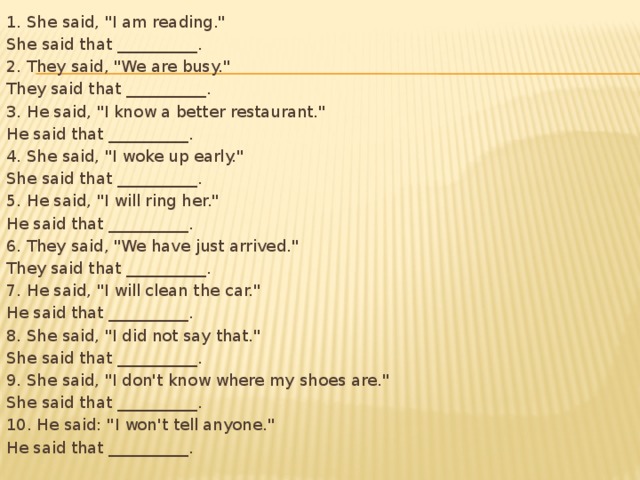 Almost half a billion people on the planet speak Spanish, it is the official language in 21 countries, as well as the official language of international organizations: the United Nations (UN), the European Union, the African Union and the Organization of American States (OAS).
Almost half a billion people on the planet speak Spanish, it is the official language in 21 countries, as well as the official language of international organizations: the United Nations (UN), the European Union, the African Union and the Organization of American States (OAS).
Spanish belongs to the Romance language group, which is based on Latin. For the first time, Latin appears on the Iberian Peninsula after the conquest of these territories by the Romans. Gradually, it mixes with existing local dialects and gets the name “vulgar” or folk Latin. At the same time, the Arabic language, which became widespread in Spain during the 700-year rule of the Moors, had a great influence on the formation of the Spanish language, with the exception of the most remote regions of Asturias, where Vulgar Latin continued to predominate. The overthrow of the Mauritanian yoke was accompanied by the gradual displacement of the Arabic language and the return of the Latin dialect throughout Spain. The centuries-old Arab yoke could not but affect the linguistic development of the region. Vulgar Latin borrowed many Arabic words and names, which became an integral part of the Spanish language, which practically did not undergo any further changes, unlike many European languages.
The centuries-old Arab yoke could not but affect the linguistic development of the region. Vulgar Latin borrowed many Arabic words and names, which became an integral part of the Spanish language, which practically did not undergo any further changes, unlike many European languages.
The official formation of the Spanish language began in the 13th century during the reign of King Alfonso X, who was popularly called “The Wise” (“El Sabio”). The Castilian name (castellano or “castellano”) of the central part of Spain was taken as the basis. The scholars of the city of Toledo translated historical chronicles, scientific and legal works, and literary works into Castilian. In addition, Castilian was recognized as the language in which all official documents and decrees were drawn up and signed. During the reign of the Catholic kings Isabella of Castile and Fernand II of Aragon, they are called “los Reyes católicos”, which united the territories of modern Spain, the Castilian dialect was declared the official language throughout the kingdom.
Despite the emergence of the state language, in various territories of Spain they continued to speak local dialects, which in many respects were varieties of the same vulgar Latin, but sometimes radically different from the Castilian dialect, for example, the language of the Basque Country. This was primarily due to the emergence of separate kingdoms during the period of the Arab yoke, which were later united by Isabella and Fernand. Many of them today are autonomies and diligently preserve their cultural and linguistic traditions.
of Spain of 1978 declares Spanish the official language of the modern Kingdom of Spain, but at the same time recognizes the right of autonomies to have a second official language in their territories. So in Catalonia, the official second language is Catalan and Aranes (“catalán” and “aranés”), in the Valencian Community – Valenciano (“valenciano”), in the Basque Country – euskera (“euskera”), in Galicia – gayego (“gallego “). In addition, there are many officially unrecognized dialects and pronunciations. The Spaniards themselves perfectly understand each other, and it does not matter whether they speak the Castilian dialect, which is recognized as the official Spanish language in the world, or each speaks his own dialect. Such linguistic diversity is an unconditional wealth of Spanish culture, which is protected and supported not only at the regional, but also at the state level.
In addition, there are many officially unrecognized dialects and pronunciations. The Spaniards themselves perfectly understand each other, and it does not matter whether they speak the Castilian dialect, which is recognized as the official Spanish language in the world, or each speaks his own dialect. Such linguistic diversity is an unconditional wealth of Spanish culture, which is protected and supported not only at the regional, but also at the state level.
The Spanish in Russian Service Center is your guide to studying in Spain. Selection of educational institutions, transfer to a Spanish university, visas, residence permit for the whole family, children’s camps, sports and English schools.
+7 495 236 98 99 or +34 93 272 64 90, [email protected]
Tags:
Spanish, History, Spanish in Spain
Was this article helpful?
Yes
(3)
Your criticism helps us improve the content. Please write what is wrong.
Please write what is wrong.
Send
No
(0)
Other materials from the heading “Teaching Spanish”
Spanish language school in Salamanca Lingua Globe
Language schools in Spain, Spanish courses, annual Spanish courses in Spain
Learning Spanish in cooking classes
Spain
Subscribe to our newsletter and be the first to know about all offers
Why the Spanish flu was the deadliest flu in history – DW – 03/05/2018
Spanish flu patients in US hospital, 1918 Photo: picture-alliance/National Museum of Health and Medicine
Society
Victor Cheretsky
March 5, 2018
One hundred years ago, an unprecedented epidemic of the so-called “Spanish flu” broke out in the world. But this most serious illness had only an indirect relation to Spain.
But this most serious illness had only an indirect relation to Spain.
https://p.dw.com/p/2thiM
Advertising
Starting a hundred years ago, in the spring of 1918, the epidemic affected all continents and in 18 months claimed the lives of 50 to 100 million people. In Spain, as in Russia – 300 thousand, in Germany – 600, France – 420, USA – 675 thousand. Millions in China and India. In total, about 550 million people were ill with the “Spanish flu” or “Spanish flu” – almost a third of the then population of the planet.
It is known that this pandemic, which is considered one of the worst in human history, had three phases. The first was observed in spring and early summer 1918 years old, the second – the most deadly – in October-December, the third – in the spring of 1919. And although the “Spanish flu” is quite well studied today, its nature still continues to cause controversy.
Epidemic survivor
“My older brother died during the epidemic.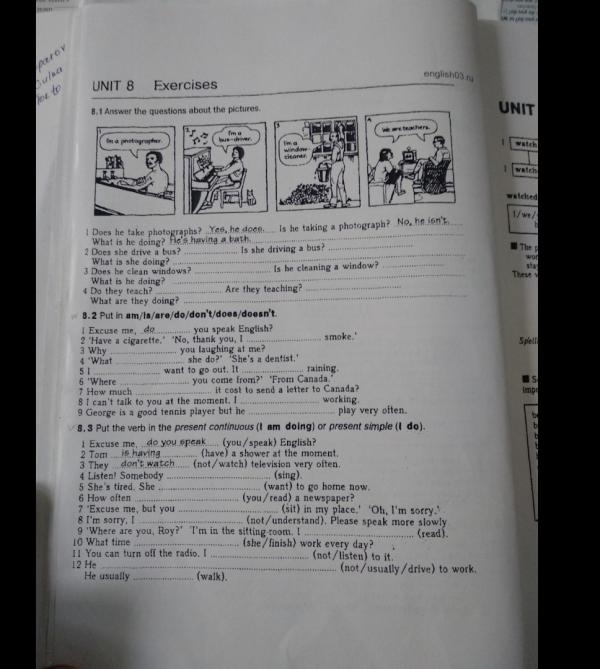 Our nanny, our family doctor, almost all the servants died,” Maria-Dolores del Carmen Rosales, who was 2 years old in 1918, told DW. – “My sister and I were taken from Madrid to the family estate by my father – that’s how we escaped. But the tragedy left its mark on our whole life.” From the stories of his father, Rosales knows that institutions, shops were closed in the city, the post office, theaters and cinemas did not work, people were buried without a funeral service and in common graves – many priests and gravediggers also died.
Our nanny, our family doctor, almost all the servants died,” Maria-Dolores del Carmen Rosales, who was 2 years old in 1918, told DW. – “My sister and I were taken from Madrid to the family estate by my father – that’s how we escaped. But the tragedy left its mark on our whole life.” From the stories of his father, Rosales knows that institutions, shops were closed in the city, the post office, theaters and cinemas did not work, people were buried without a funeral service and in common graves – many priests and gravediggers also died.
Maria Dolores del Carmen Rosales with her daughters Photo: DW/V. Cheretzkij
“Our doctor Don Federico was in private practice, but during the epidemic he voluntarily went to work in the hospital of the Order of St. Francis of Assisi,” continues Maria Dolores. The hospital was filled with dying people. They lay in the wards, in the corridors, in the cellars, even in the yard. Doctors and nuns who cared for the sick worked without rest, trying to save people.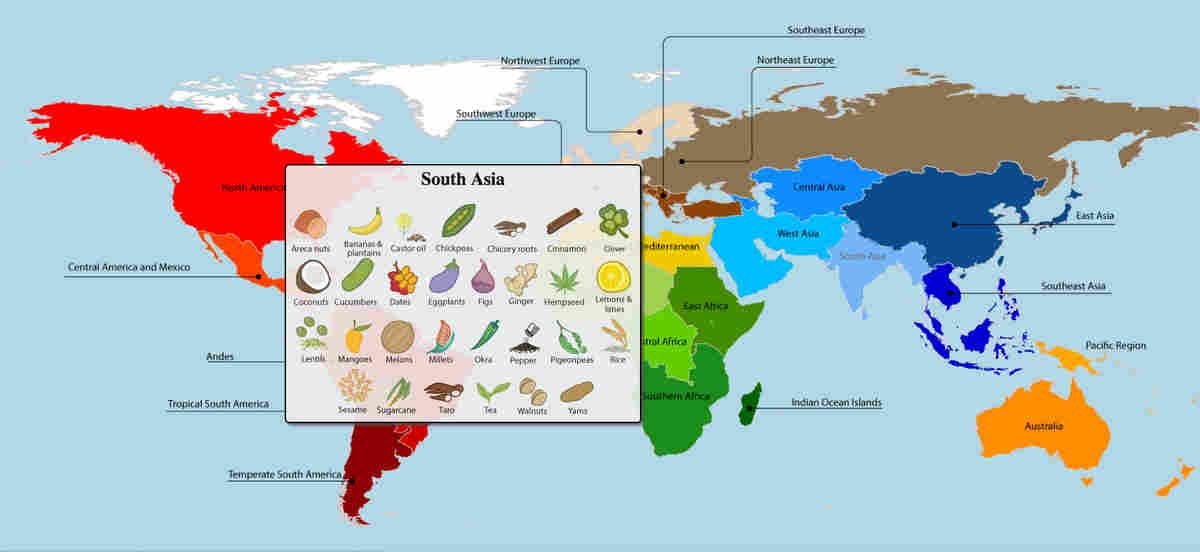 Many of them, including Don Federico, became infected and died. “After all, then no one really knew how to be treated for this disease, people were in despair, everyone was talking about the end of the world,” a 102-year-old resident of Madrid recalls today.
Many of them, including Don Federico, became infected and died. “After all, then no one really knew how to be treated for this disease, people were in despair, everyone was talking about the end of the world,” a 102-year-old resident of Madrid recalls today.
Why the flu was called “Spanish”
It is believed that the epidemic did not start in Spain at all and this country suffered from it no more than others. As noted by the Madrid ABC, which devoted a series of articles to the sad anniversary, the flu probably first appeared in the United States, in Kansas – in a military camp where recruits were trained to be sent to Europe to help the Entente countries – back in 1917. According to another version, the pandemic originated somewhere in East Asia, either in China or in Vietnam – it is not known exactly – and quickly spread throughout the world.
Why then was the flu called “Spanish”? The fact is, the newspaper writes, that the epidemic coincided with the First World War. In the warring powers, censorship was in effect, and the press was forbidden to write about the scale of the epidemic – so as not to please the enemy. Well, Spain did not participate in the war, and its newspapers were the main source of information about the disease. Thus, the Europeans first began to use the expression, “influenza reported by the Spaniards”, and then simply “Spanish flu” or “Spanish flu”.
In the warring powers, censorship was in effect, and the press was forbidden to write about the scale of the epidemic – so as not to please the enemy. Well, Spain did not participate in the war, and its newspapers were the main source of information about the disease. Thus, the Europeans first began to use the expression, “influenza reported by the Spaniards”, and then simply “Spanish flu” or “Spanish flu”.
Hospital of the Order of St. Francis of Assisi in Madrid Photo: DW/V. Cheretzkij
However, there are other versions of the origin of the name. In France, for example, there were rumors that the Germans had somehow “contaminated” a batch of canned food that the Spaniards supplied to the French. The illness allegedly started from the Spanish canned food.
War and pandemic
The rapid spread of the disease, according to the FAA, “has been particularly facilitated by military operations.” According to one version, the flu was generally brought to Europe by soldiers of the American Expeditionary Force. Whatever it was, the newspaper notes, it is known that the main centers of the epidemic were places of mass congestion of the military – at the front and in the rear – in the barracks, in the trenches, in the hospitals where the wounded were treated. It was the military that became the main victims of the epidemic. Other wartime troubles – insufficient and poor-quality food, unsanitary conditions, lack of medical staff – also contributed to the expansion of the epidemic.
Whatever it was, the newspaper notes, it is known that the main centers of the epidemic were places of mass congestion of the military – at the front and in the rear – in the barracks, in the trenches, in the hospitals where the wounded were treated. It was the military that became the main victims of the epidemic. Other wartime troubles – insufficient and poor-quality food, unsanitary conditions, lack of medical staff – also contributed to the expansion of the epidemic.
Meanwhile, the flu has affected all segments of the population. He was ill with them in Spain, for example, even King Alfonso XIII. And in Russia, the famous film actress Vera Kholodnaya died of the flu. Brazilian President Francisco Rodrigues Alvis, French poet Guillaume Apollinaire, German sociologist Max Weber died. The Parisian singer Edith Piaf was ill with the “Spanish flu”, and her daughter died from this disease. Officially, Yakov Sverdlov, chairman of the All-Russian Central Executive Committee of the RSFSR, also became a victim of the pandemic, although there are other versions of the causes of his death.
An ominous virus
“The gene structure of the 1918 h2N1 virus responsible for the tragedy was only recreated in 2002,” Jorge Nunez Sanz, an epidemiologist at the University of Madrid, told DW. According to him, only American colleagues succeeded in this, who received material for study from the remains of an Alaskan woman who died of influenza, buried in permafrost at one time. As for the symptoms of the disease, they are well known. At first, people felt extremely weak, it was difficult for them to breathe, their stomach ached, their temperature rose. Then the face turned blue, intrapulmonary bleeding and a bloody cough were observed – the patients literally choked with blood. On average, the disease lasted only three days – after which death occurred. But often people did not have any pronounced symptoms at all, and death was observed the next day after the onset of the disease.
“Drug treatment, of course, was useless in the fight against this viral flu,” the professor recalled.